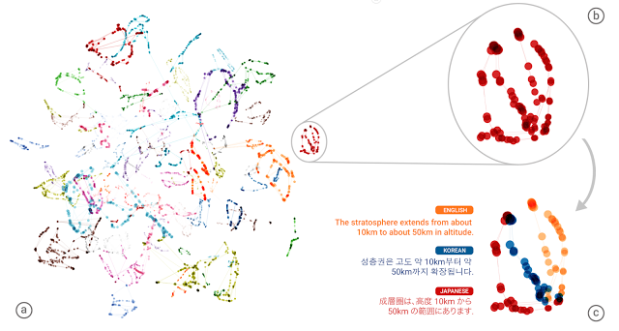Since September Google uses a new engine for their translation tool. It is running a neural network instead of a classical translation table. Here I have a test for you. I got a German part of Popper and Eccles’ The Self and its Brain. One of the following English quotes is the English original and one is the Google translation. Guess which is which!
Here is the German original:
“Menschliche Wesen sind unersetzlich; und dadurch unterscheiden sie sich deutlich von Maschinen. Menschen können das Leben genießen; sie können leiden und sie können dem Tod bewusst ins Auge sehen. Sie haben Bewusstsein, sie haben ein Ich, eine Seele. Eine Person ist Zweck, nicht Mittel zum Zweck, wie Kant betont.”
Here are the translations. First:
“Human beings are irreplaceable; And thus they differ significantly from machines.
People can enjoy life; They can suffer and they can consciously face death. They have consciousness, they have an ego, a soul. A person is purpose, not means to the purpose, as Kant emphasizes.”
Second:
“Human beings are irreplaceable; and in being irreplaceable they are clearly very different from machines. They are capable of enjoying life, and they are capable of suffering, and of facing death consciously. They are selves; they are ends in themselves, as Kant said.”

Displaying a neural network of the new engine. Taken from the article of the Google research blog.
And did you get which one is which? Actually the first one is the Google translation. The second one the English original. I did some more tests, where I translated English passages into German. And Google Translate is doing very well. Even getting some points in style. Try it for yourself and have some fun with the new engine. I think it is really astonishing how well it works.
For some technical details check out this article at the Google research blog.
Zero-Shot Translation with Google’s Multilingual Neural Machine Translation System
The improvements made are quite impressive. Google translate has become useful. However, the system has the (funny) gaps typical of all AI systems. For example, the following text (from Wikipedia):
“Ein Frauenstift ist eine religiöse Lebensgemeinschaft für Frauen, die ohne Ablegung von Gelübden in einer klosterähnlichen Anlage leben. Die in einem solchen freien weltlichen Stift lebenden (im Mittelalter meist adligen) Damen werden als Kanonissen, Chorfrauen oder Stiftsdamen bezeichnet, daher werden häufig auch die Begriffe Damenstift oder Kanonissenstift verwendet.”
came out as
“A women’s pencil is a religious community for women who live without a vow in a monastery-like complex. The ladies who live in such a free secular penitentiary (usually in the Middle Ages) are called canons, chorfirs, or penitents, so the term “lady pin” or “canon pin” is often used.”
Retranslating this yields:
“Ein Frauen-Bleistift ist eine religiöse Gemeinschaft für Frauen, die ohne Gelübde in einem Kloster-ähnlichen Komplex leben. Die Damen, die in solch einem freien säkularen Zuchthaus (meist im Mittelalter) leben, heißen Kanons, Chorfirs oder Büßer, so wird der Begriff “Dame Pin” oder “Canon Pin” oft verwendet.”
:-))
A neuronal network of this kind is still an algorithm and every algorithm has blind spots.
LikeLike
it’s improving but quite difficult to translate from other language to english, the other way around is quite okay.
LikeLike